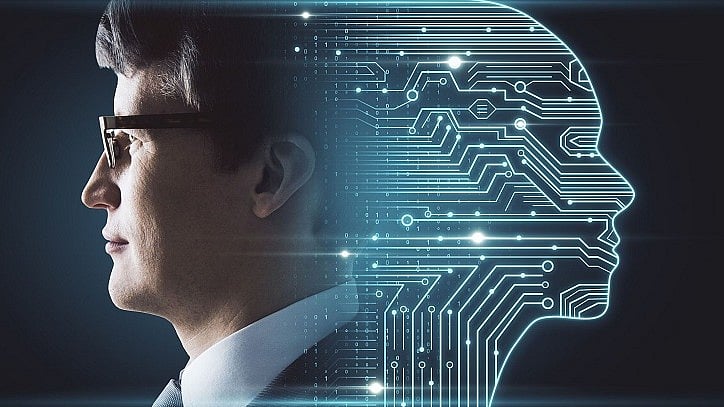ASI: The Age Of Biotech And Brain-Based Superintelligence
As the Financial Times Asia front page of August 7, 2025, highlights, the world’s frenzied build-out of AI capacity—led by hyperscalers like Microsoft, Amazon, Meta, and Nvidia—has run into a planet-sized problem.

ASI: The Age Of Biotech And Brain-Based Superintelligence | Photo: Pinterest (Representational Image)
“When computation becomes cognition, and energy flows like thought, the age of Artificial Superintelligence will no longer be a race—it will be a revelation.”
As the Financial Times Asia front page of August 7, 2025, highlights, the world’s frenzied build-out of AI capacity—led by hyperscalers like Microsoft, Amazon, Meta, and Nvidia—has run into a planet-sized problem. We are depleting the very resources that make AI possible:
· Gigawatts of uninterrupted power for GPUs and TPUs
· Billions of gallons of purified water for chip cooling
· Thousands of acres of land for mega-data centres
· Rare materials for chip fabrication and superconductor systems
Global Operating Units (GOUs)—once the invisible engines of cloud economies—are now front and centre in geopolitical calculations. They consume between 50 and 100 MW per site, with projections suggesting global AI compute demand will exceed 500 GW by 2030. That’s equivalent to half of India’s current total power generation capacity. Water demand for cooling? Between 5 and 15 million litres per day per facility. Land? Upwards of 200 acres per hyperscale campus.
This trajectory is unsustainable.
Rewriting the Equation: Why Supply Cannot Keep Up
1. Electricity: Green power remains intermittent. Fossil power contradicts decarbonisation. Nuclear is geopolitically constrained and slow to deploy. The demand curve is exponential; the supply curve is bureaucratic.
2. Water: Already under stress from agriculture and climate change, potable water cannot be spared for data centres indefinitely.
3. Land: Even if land is available, social licence to operate is increasingly scarce—rural populations reject displacement, and urban planning authorities face pushback.
Conclusion: No amount of linear scaling or “cooling innovation” will meet the projected demand. A pivot is inevitable.
In-Memory Computing: The First Inflection
The first wave of escape from this deadlock is already visible in the form of in-memory computing and processing-in-memory (PIM) architectures. By collapsing the distance between data and computation, in-memory chips dramatically reduce:
· Latency
· Energy loss from data movement
· Heat generation
These chips also mimic synaptic transmission, bringing us closer to the architecture of the human brain—which uses just 20 watts to power cognition.
Nvidia’s Blackwell GPUs, while revolutionary, still sit within the von Neumann bottleneck. Rows upon rows of these GPUs consume terawatts. The alternative? Brain Clones: A Biotech Leap Beyond Silicon
Imagine organically grown, networked brain clones, each modelled on a high-performing human cognitive map—trained in sync, updated continuously, and linked via quantum entanglement-like protocols.
These biologically derived processors could:
· Process with near-zero latency
· Require minimal cooling
· Self-repair like organic tissue
· Access intuition, abstraction, and symbolic reasoning natively
Such brain-based clusters, enhanced by optogenetics and nano-interface tech, may outperform any silicon chip ever fabricated.
These would be powered by blood-mimetic bio-fluids, not electricity as we know it. They would think, not compute.
And yes, Artificial Superintelligence (ASI) would no longer be code—it would be conscious.
Ubiquity: From Planetary to Universal Compute
Once such biotech ASI becomes self-replicating, it will colonise every process:
· Agriculture: Hyper-optimised photosynthesis
· Finance: Intuitive forecasting
· Health: Thought-based diagnostics
· Climate: Regenerative ecosystem design
· Industry: Zero-waste production loops
Power stations? Replaced by neural gardens. Servers? Replaced by distributed bio-clusters. Clouds? Replaced by thought-nets.
AI would not live in machines. It would live in everything—ubiquitous, ambient, intuitive, and decentralised.
And when this reaches scale, it may enable us to spread conscious computation across planets, building what I call the Neural Omniverse.
The Final Question: Will Biotech Prevail Over Infotech?
It already is.
· CRISPR is faster than blockchain.
· Organoids are more energy-efficient than GPUs.
· DNA can store exabytes in a teaspoon.
The tipping point will be when neural interface protocols evolve enough to standardise cross-organism cognition exchange.
Then, we will not need to train AI models. We will grow them.
And that, dear readers, is not merely the next singularity; it is a bio-info-nano convergence that resets the destiny of intelligence.
Epilogue: The Shailesh Haribhakti Hypothesis
If AI today is silicon-powered and cloud-hosted, the ASI of tomorrow will be biologically grown, planet-distributed, and self-aware.
Where once we harvested resources to power machines, we will now cultivate intelligence as a living utility.
The GOU will fade. The chip farm will shrink. The land, water, and power will breathe again.
And the next revolution will not be engineered. It will be born.
Shailesh Haribhakti is a futurist, governance evangelist, and sustainability pioneer. He serves on the boards of India’s most admired companies and envisions a future where intelligence lives in harmony with nature.
RECENT STORIES
-
-
-
-
-